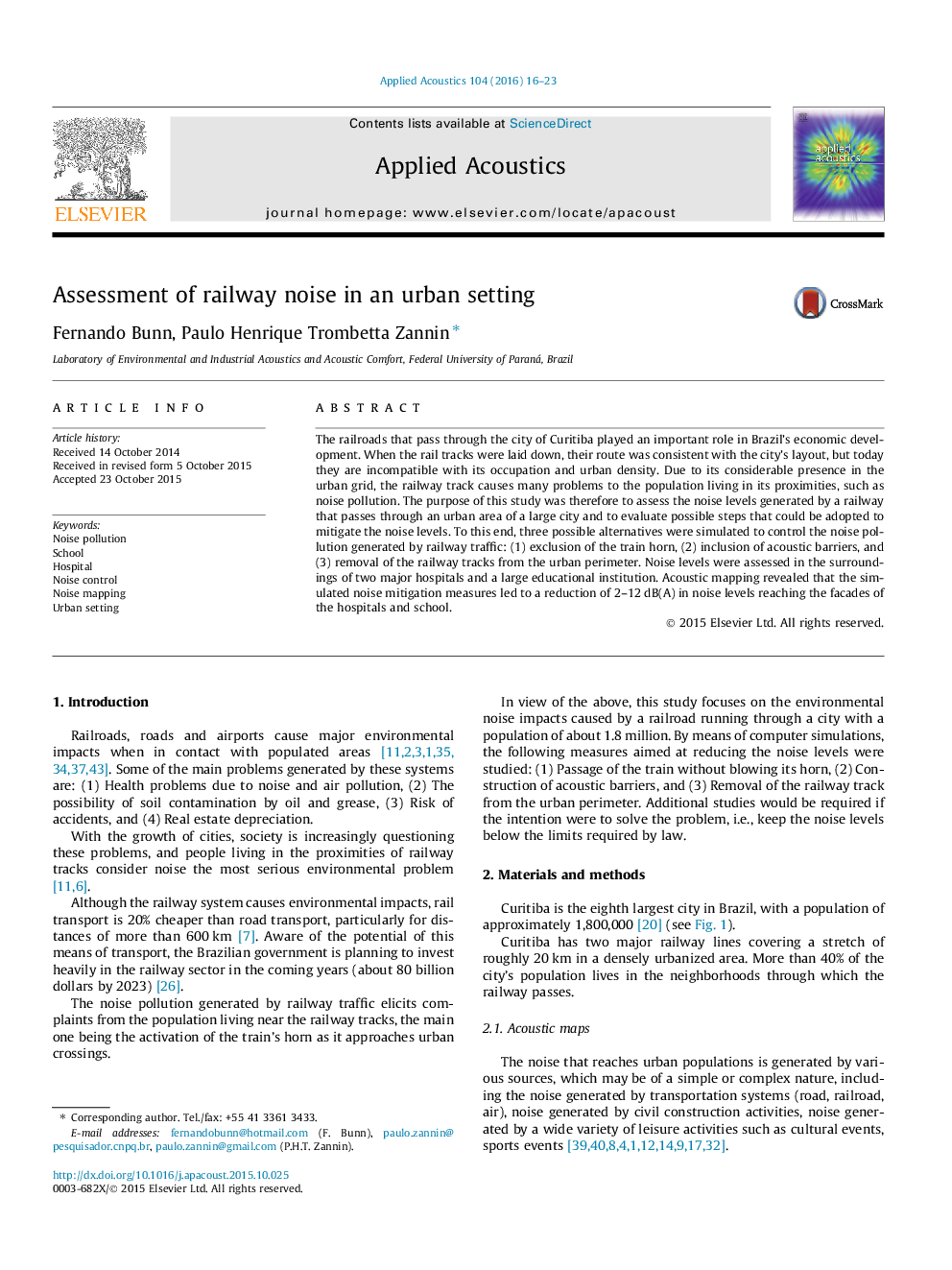| Article ID | Journal | Published Year | Pages | File Type |
|---|---|---|---|---|
| 7152525 | Applied Acoustics | 2016 | 8 Pages |
Abstract
The railroads that pass through the city of Curitiba played an important role in Brazil's economic development. When the rail tracks were laid down, their route was consistent with the city's layout, but today they are incompatible with its occupation and urban density. Due to its considerable presence in the urban grid, the railway track causes many problems to the population living in its proximities, such as noise pollution. The purpose of this study was therefore to assess the noise levels generated by a railway that passes through an urban area of a large city and to evaluate possible steps that could be adopted to mitigate the noise levels. To this end, three possible alternatives were simulated to control the noise pollution generated by railway traffic: (1) exclusion of the train horn, (2) inclusion of acoustic barriers, and (3) removal of the railway tracks from the urban perimeter. Noise levels were assessed in the surroundings of two major hospitals and a large educational institution. Acoustic mapping revealed that the simulated noise mitigation measures led to a reduction of 2-12Â dB(A) in noise levels reaching the facades of the hospitals and school.
Related Topics
Physical Sciences and Engineering
Engineering
Mechanical Engineering
Authors
Fernando Bunn, Paulo Henrique Trombetta Zannin,
